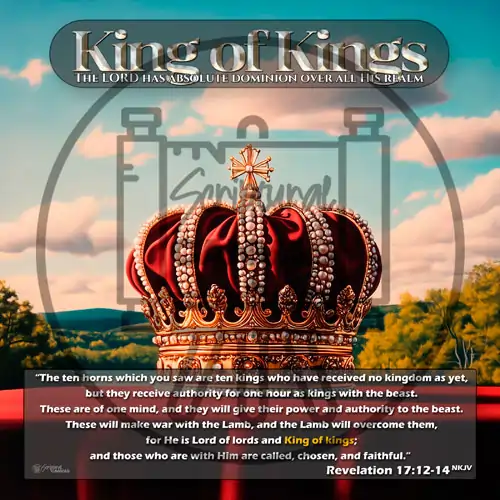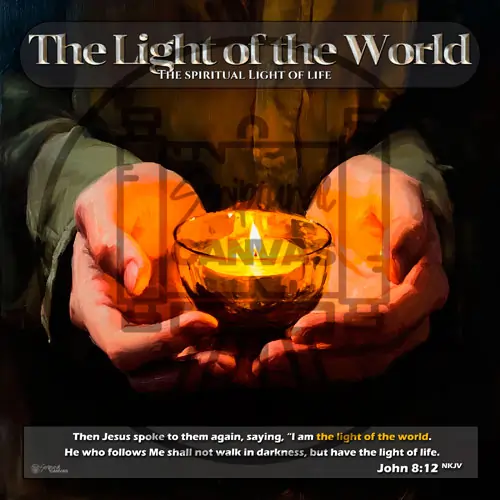Description
The Lamb of God: A Humble Sacrifice
The image “Lamb of God” presents a serene and poignant scene: a spotless white lamb resting peacefully in a bed of straw, set against the backdrop of a rustic barn and rolling hills. The lamb, a symbol of purity and innocence, immediately draws the viewer’s attention to its vulnerability and quiet dignity. The straw signifies Christ’s humble birth, the barn God’s provision, and the rolling hills, His vast, eternal love. This visual composition is designed to evoke a sense of peace, reverence, and contemplation, inviting viewers to reflect on the profound meaning of Jesus’ sacrifice.
John the Baptist’s Proclamation: Behold the Lamb!
At the heart of this Scriptile’s meaning lies John 1 (NKJV): “29 The next day John saw Jesus coming toward him, and said, “Behold! The Lamb of God who takes away the sin of the world! 30 This is He of whom I said, ‘After me comes a Man who is preferred before me, for He was before me.’“ John the Baptist’s proclamation is a pivotal moment in biblical history, as he identifies Jesus as the long-awaited Messiah, the “Lamb of God.” This title carries profound theological weight, drawing on the Old Testament concept of sacrificial lambs offered for atonement. John’s words are not merely a description but a divine revelation, unveiling Jesus’ true identity and purpose.
The Old Testament Precedent: Sacrificial Lambs
The concept of the “Lamb of God” finds its roots in the Old Testament sacrificial system, where lambs were offered as atonement for sins. Leviticus 4 outlines the procedures for sin offerings, highlighting the importance of a spotless animal as a symbol of purity and perfection. The Passover lamb, described in Exodus 12, also serves as a crucial precedent. The blood of the lamb, applied to the doorposts of Israelite homes, protected them from God’s judgment. This act prefigures the blood of Christ, which shields believers from eternal condemnation. This image, with its spotless lamb, directly references these Old Testament parallels, emphasizing the continuity of God’s redemptive plan.
Jesus, the Ultimate Passover Lamb
In 1 Corinthians 5:7, Paul writes, “Therefore purge out the old leaven, that you may be a new lump, since you truly are unleavened. For indeed Christ, our Passover, was sacrificed for us.” This verse explicitly connects Jesus to the Passover lamb, reinforcing the idea that His sacrifice was the ultimate and perfect offering. Unlike the lambs of the Old Testament, whose sacrifices had to be repeated, Jesus’ sacrifice was once and for all, providing eternal redemption. The peaceful posture of the lamb in the image reflects this finality and completeness of Christ’s sacrifice. The barn setting, a place of humble beginnings, further emphasizes the contrast between the majesty of His sacrifice and the simplicity of His earthly life.
The Lamb Slain
The book of Revelation portrays Jesus as the “Lamb who was slain,” worthy to open the scroll and break its seals (Revelation 5:12). This image highlights the sacrificial nature of Jesus’ death and His subsequent exaltation. 1 Peter 1:19 further emphasizes the preciousness of His blood, describing it as “the precious blood of Christ, as of a lamb without blemish and without spot.” The spotless white lamb in the image symbolizes this purity, reminding viewers of the immense value of Christ’s sacrifice. The rolling hills in the background can be thought of as a symbol of the eternal kingdom, that the slain lamb, now seated in power, has purchased for all believers.
Atonement and Redemption
Hebrews 9, verses 12 through 14, clarifies the superiority of Christ’s sacrifice, stating “12 Not with the blood of goats and calves, but with His own blood He entered the Most Holy Place once for all, having obtained eternal redemption. 13 For if the blood of bulls and goats and the ashes of a heifer, sprinkling the unclean, sanctifies for the purifying of the flesh, 14 how much more shall the blood of Christ, who through the eternal Spirit offered Himself without spot to God, cleanse your conscience from dead works to serve the living God?”
This passage underscores the transformative power of Christ’s blood, which cleanses not just the flesh but also the conscience. The image of the lamb, resting peacefully, invites viewers to experience this cleansing and find peace in Christ’s sacrifice. The straw in the image, a place of rest, can be thought of as a place of finding rest in the finished work of Christ, the Lamb of God.
The Lamb’s Reign
Finally, the book of Revelation concludes with the image of the Lamb of God reigning in glory. Revelation 7:17 describes the Lamb as the Shepherd who “for the Lamb who is in the midst of the throne will shepherd them and lead them to living fountains of waters. And God will wipe away every tear from their eyes.” Revelation 22:3 proclaims, “And there shall be no more curse, but the throne of God and of the Lamb shall be in it, and His servants shall serve Him.” This image invites viewers to embrace the hope of redemption, finding solace and strength in the Lamb of God.







Reviews
There are no reviews yet.